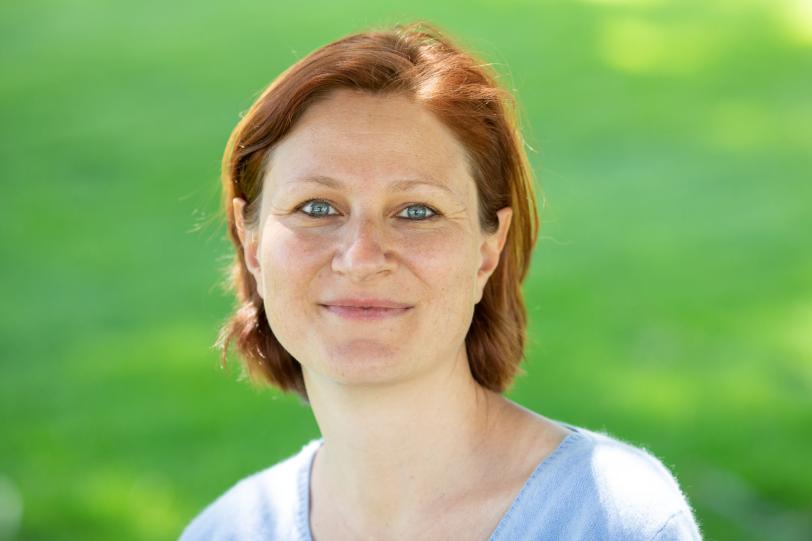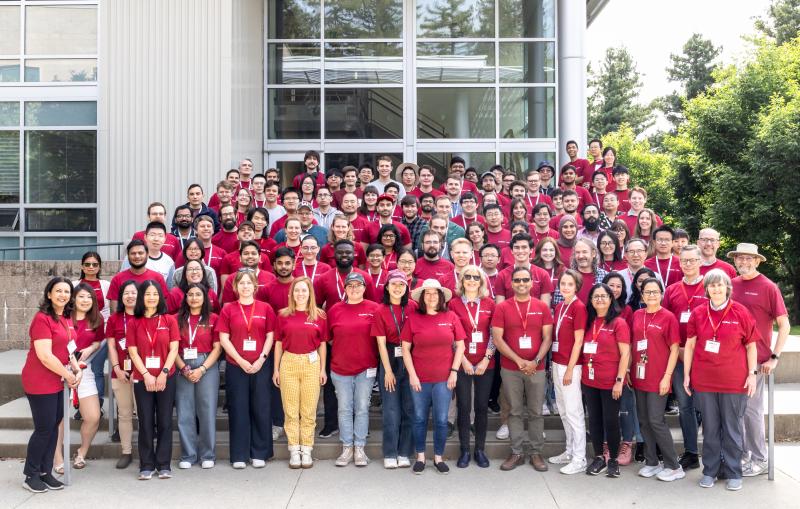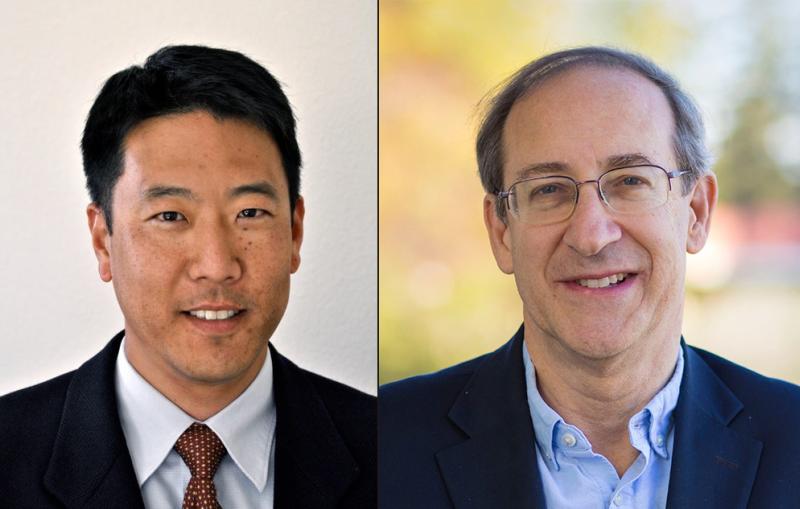Tais Gorkhover wins LCLS Young Investigator Award for pioneering novel X-ray imaging methods
The early-career award honors a promising leader in X-ray free-electron laser research.
By Miyuki Dougherty
Tais Gorkhover, a principal investigator with the Stanford PULSE Institute, will receive the 2018 LCLS Young Investigator Award, granted to early-career scientists in recognition of exceptional research using the Linac Coherent Light Source (LCLS) X-ray free-electron laser at the Department of Energy’s SLAC National Accelerator Laboratory.
Like high-speed cameras with bright flashes, X-ray free-electron lasers (XFELs) allow scientists to capture extremely rapid fundamental processes – such as chemical reactions – at the scale of atoms and molecules. Their intensely bright light pulses last just femtoseconds, or quadrillionths of a second. Researchers like Gorkhover figure out how to exploit this innovative technology.
“This award is a great honor and an exciting sign of recognition from the community,” said Gorkhover. “The early days of LCLS coincided with my first days as a PhD student, and I attended some of the first beam times and was involved in the early commissioning of the LCLS AMO experimental station. I was immediately hooked on the pioneering spirit of the lab as we witnessed the birth of a new field.”
After her graduate studies at the Technical University of Berlin in Germany, Gorkhover joined SLAC in 2014 as a Peter Paul Ewald fellow from the Volkswagen Foundation. Gorkhover has been a spokesperson for three LCLS experiments and a collaborator in more than 15, and she co-authored or led more than 30 publications in high-impact journals.
“Tais has been an active researcher at XFELs since her PhD thesis, producing a series of high-impact publications herself, but also actively working in and supporting multiple collaborations,” said Christoph Bostedt of the Paul Scherrer Institute and EPFL in Switzerland, in his nomination letter. Bostedt is a former SLAC senior staff scientist and a long-time scientific mentor to Gorkhover. “Tais is one of the most creative and determined scientists, and I strongly believe that she has a promising science career ahead of her.”
Gorkhover was one of four SLAC scientists to win the Department of Energy’s Early Career Research Program award in March 2018. In 2016, she was the first female scientist to receive the Panofsky Fellowship, named after the laboratory’s founder and first director.
“I’m interested in developing new imaging methods that are becoming possible because of XFELs,” says Gorkhover. “My main motivation is to see how we can use this exciting technology to learn about the behavior of complex nanoscale systems.”
The LCLS XFEL is a powerful “microscope” with a wide range of applications, including many areas of science that significantly impact our lives. Over the past nine years, it has allowed scientists to create molecular movies, watch a chemical bond as it breaks, construct 3-D images of proteins critical to drug discovery and observe the movements of individual electrons.
LCLS research helps scientists create faster and smaller computers, manufacture greener and more efficient chemicals, develop safer and more effective drugs, re-create energy processes found in nature and replicate our sun’s fusion reactions.
“Tais was nominated multiple times by the users’ community and is clearly doing important and cutting-edge research,” says Arianna Gleason, vice chair of the LCLS Users’ Executive Committee. “I am thrilled that there are so many talented, energetic and well-qualified young scientists orchestrating their research at this incredible facility.”
A creative innovator
Gorkhover pioneered “in-flight holography”, a novel X-ray imaging technique that applies the principles of holography to the advanced capabilities of free-electron lasers like LCLS. Gorkhover is the principal investigator in a study featured on the March 2018 cover of Nature Photonics that demonstrated the first X-ray holograms of nanosized viruses.
Holography is a method used to create 3-D images of objects by superimposing patterns made by X-rays ricocheting off an object’s surface and overlapping with other waves of light. The sample is carefully placed next to a reference object, which scatters light in a very predictable pattern and serves as a control. Deviations from the expected pattern allow scientists to decipher the size and shape of the sample object.
However, unlocking the benefits of holography with LCLS, an ultrafast camera, required Gorkhover to approach holography from a very different angle.
“Experimentally, it’s very difficult to control the reference object,” says Gorkhover, explaining that samples are injected into an unknown position inside the path of the LCLS X-ray, making it impossible to set up the perfect conditions for holography. “But it became clear that we could refocus our thinking and apply holography regardless, because it is such a powerful concept.”
Watching the ultrafast and ultrasmall
With the LCLS Young Investigator Award and Early Career Research grant Gorkhover will work on new imaging methods for XFELs to follow processes in nanoparticles that occur within femtoseconds. With this information, scientists can infer how significant reactions are initiated and how they can be controlled.
“I’m interested in using XFEL technology so that we can really watch processes on the ultrafast timescale,” says Gorkhover. “We are working on our fundamental ability to see the world, and every new experiment lets you see a little more, and opens new capabilities.”
In a nomination letter, Stephen Pratt, senior chemist at Argonne National Laboratory, wrote, “Tais is already a leader in creating and applying new tools that are enabled by the LCLS and other X-ray free-electron lasers, particularly in the field of time-resolved X-ray imaging…I am confident that she will be a leader in experiments at FELs for many years to come.”
The LCLS Users’ Executive Committee will present the award to Gorkhover at the 2018 LCLS/SSRL Annual Users’ meeting on Sept. 25 – 28.
Contact
For questions or comments, contact the SLAC Office of Communications at communications@slac.stanford.edu.
SLAC is a multi-program laboratory exploring frontier questions in photon science, astrophysics, particle physics and accelerator research. Located in Menlo Park, Calif., SLAC is operated by Stanford University for the U.S. Department of Energy's Office of Science.
SLAC National Accelerator Laboratory is supported by the Office of Science of the U.S. Department of Energy. The Office of Science is the single largest supporter of basic research in the physical sciences in the United States, and is working to address some of the most pressing challenges of our time. For more information, please visit science.energy.gov.






